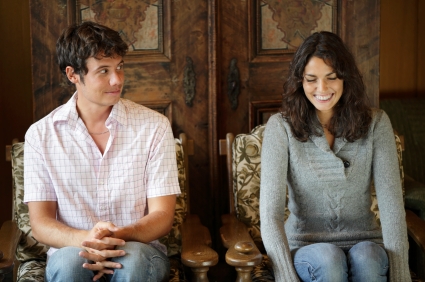What is visualization ?
“Visualization,” “imaging,” or “cognitive behavioral rehearsal” is the process of creating detailed mental pictures of behaviors you wish to assume. It can be a useful supplement to your other efforts at overcoming shyness. In effect, it is a way of practicing in your mind behaviors that you wish to acquire in real life.
And research shows that visualization can really help. Researchers at Louisiana State University found that people could actually increase the amount of weight they could lift by visualizing themselves doing so.
Daydreaming is a form of visualization. The difference between visualization and daydreaming, however, is that there are gaps in daydreams, and we picture some hypothetical event that will probably never take place. In the visualization process, by contrast, we picture something that is more likely to happen and imagine the step-by-step process by which we will handle it.
You need to practice visualization when you know you can relax without fear of interruption. Try to choose a time when nobody else is home, or, if this is not possible, go to a room by yourself and hang a “Do Not Disturb” sign on the door. (It is okay to tell people what you are doing.)
Before you begin your visualization session, you should relax for a few minutes. You need no special regimen. If you are familiar with yoga, meditation, or another relaxation discipline you may practice it briefly before beginning visualization. Otherwise, kicking off your shoes, putting your feet up, and going into a quiet mood will be fine.
It is important, however, to be relaxed when visualizing because you want to subconsciously associate a feeling of relaxation with the social situations that you are about to mentally rehearse. When you actually enter into a situation you visualized, you want to be able to recall that relaxed state vividly.
When you feel you are sufficiently relaxed you are ready to start the visualization process.
1: Close your eyes and picture the scene that causes you shyness as vividly and accurately as possible. Picture the people who are involved in the scene. What do they say? How do you respond?
2: If you are visualizing something that happened in the past, picture the scene as it actually happened as vividly as possible. What is it that was difficult about this situation?
3: What did the other person (or people) say? What did you say? What do you feel was inadequate about your performance?
4: Now visualize the exact same scene again. Picture what the other person said to you. But this time, picture yourself responding as you wish you had responded. Or, if you initiated the interaction, picture yourself doing so as you wish you had, effectively, self-confidently. If you have trouble knowing what this would be, think of an outgoing person you admire and picture how he or she would handle the situation. Imagine yourself behaving the same way.
5: Now picture how you think the other person might have responded to you had you acted the way you wished. Then visualize your next move or statement, his or her response, and so on, until you think the interaction is completed.
6: If you are visualizing something that will happen in the future, you must make a number of suppositions. Who do you expect to be talking to? Is it likely to be a man or a woman? Have you met this person before? What is the setting? What do you wish to accomplish with the interaction? How should you approach this person? What do you think you should say? What do you expect the other person to say? How will you respond? Visualize this scene repeatedly until you think you have worked out all the details and have determined what your best approach will be and how you will respond to various possible behaviors on the part of the other person. Picture yourself being relaxed, friendly, confident.
The important thing to remember when visualizing is not simply to think “I must be more outgoing,” but to actually see yourself being more outgoing. See every step of your desired behavior as if it were projected on a movie screen. Just as you mentally “see” various scenarios acted out when you daydream, so must you “see” them when you visualize. As with any other skill, your ability to visualize will improve with practice.
A few other tips: First, be realistic about what you’re visualizing. Don’t see yourself as being the “life of the party” right away. Instead, look at the graduated desensitization list that you made up in the previous section, start visualizing the first thing that causes you shyness, and work your way up from there.
20-30 minutes a day is a good amount of time to devote to visualization.



